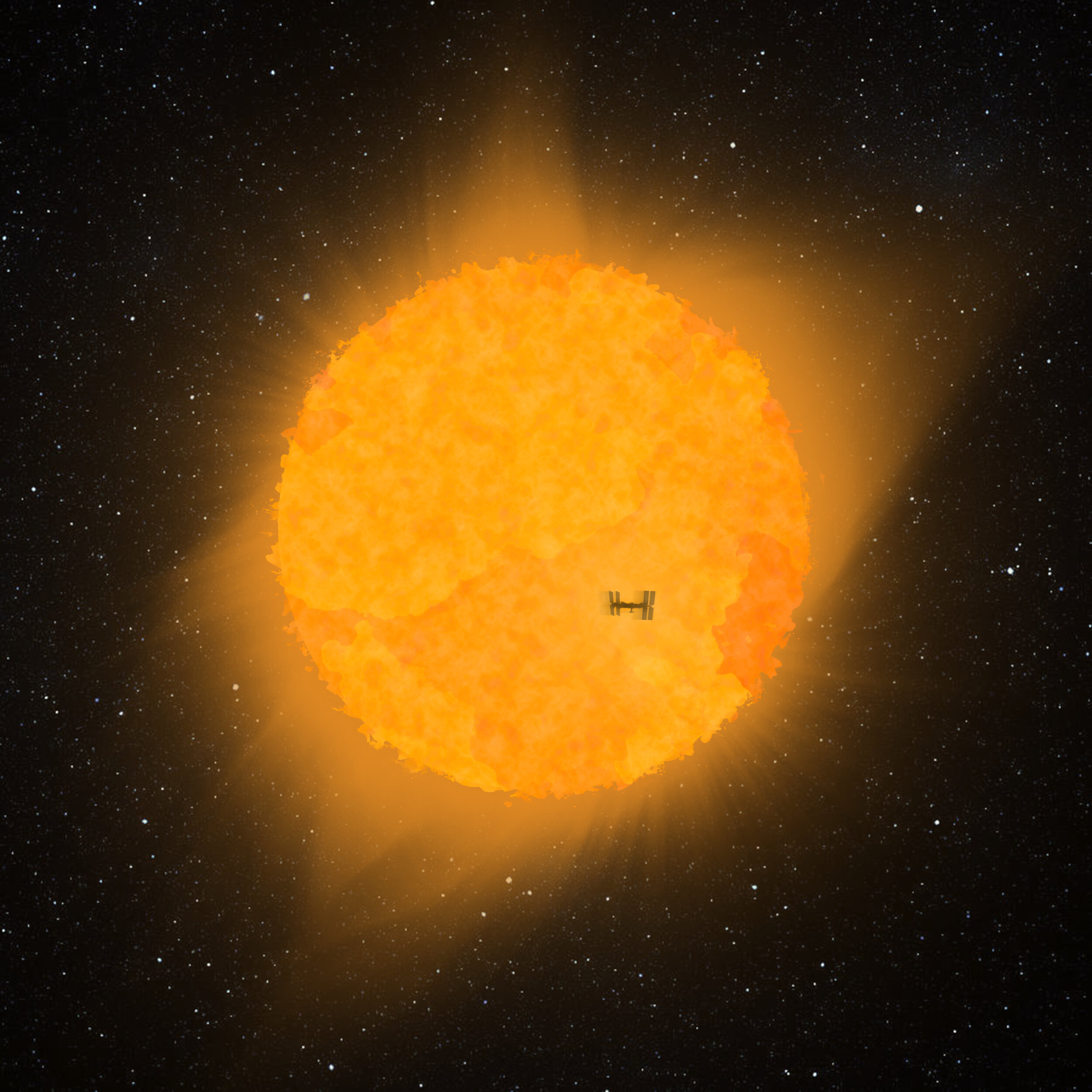
Project Helix Receives Round 1 Funding
I am pleased to announce that Project Helix has received Round 1 funding from the DoraHacks Starship Use Cases Hackathon…
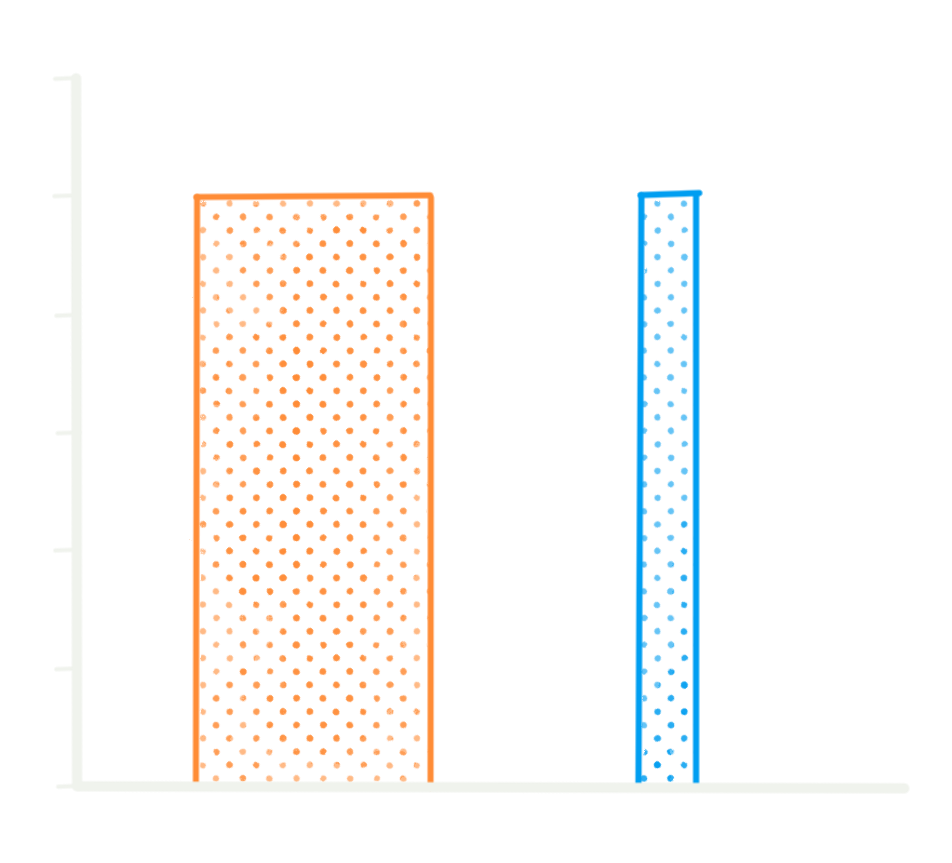
Longtermism and Population Ethics - The Case for Space Habitation
More people living sufficiently good lives is a good thing to bring about. This is supported by the predominant theories of population ethics, which is the field of study that explores the ethics, policies, and comparisons related to the wellbeing of populations that may come about in the future.

The Effect of Transhumanism on Space Habitat Design
In the design of large space habitats (especially those fantastic in scale or technology), the unspoken assumption is that the people who would inhabit them would be practically equivalent to contemporary humans. Considering the temporally distant nature of such structures along with the increasing pace of technological advancement in the areas that may spur human control over our own makeup and evolution, I propose that the condition of the human species at that time may render some of the fundamental assumptions of such habitats irrelevant.
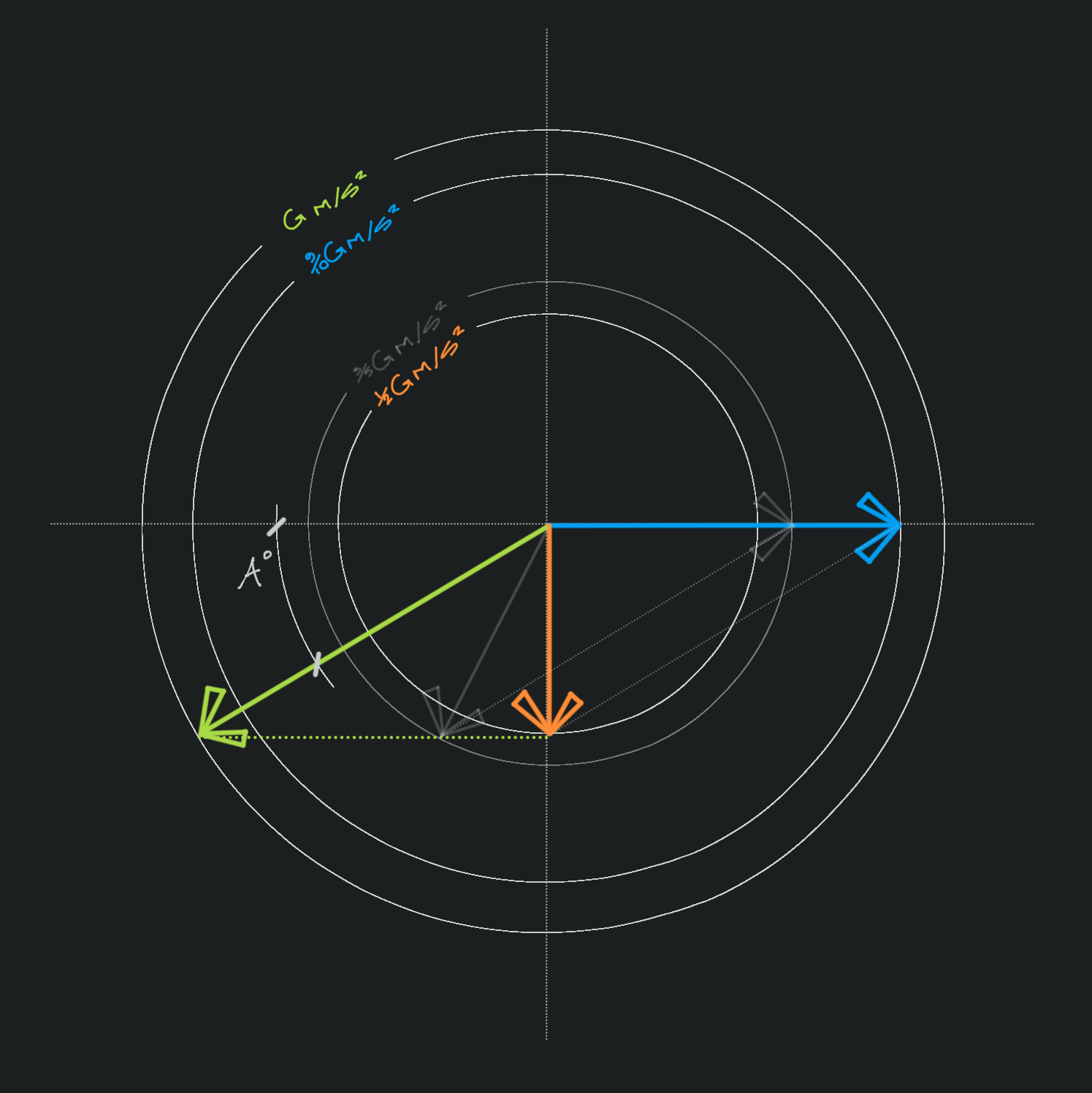
Simulating Different Gravity on a Planetary Body
Humans need gravity. This much is known. What is not known is how much gravity. For this reason it would be quite convenient to be able to simulate different levels of gravity. If we could, we might be able to understand the effects of gravity on humans over time, but is such a capability possible and/or practical?
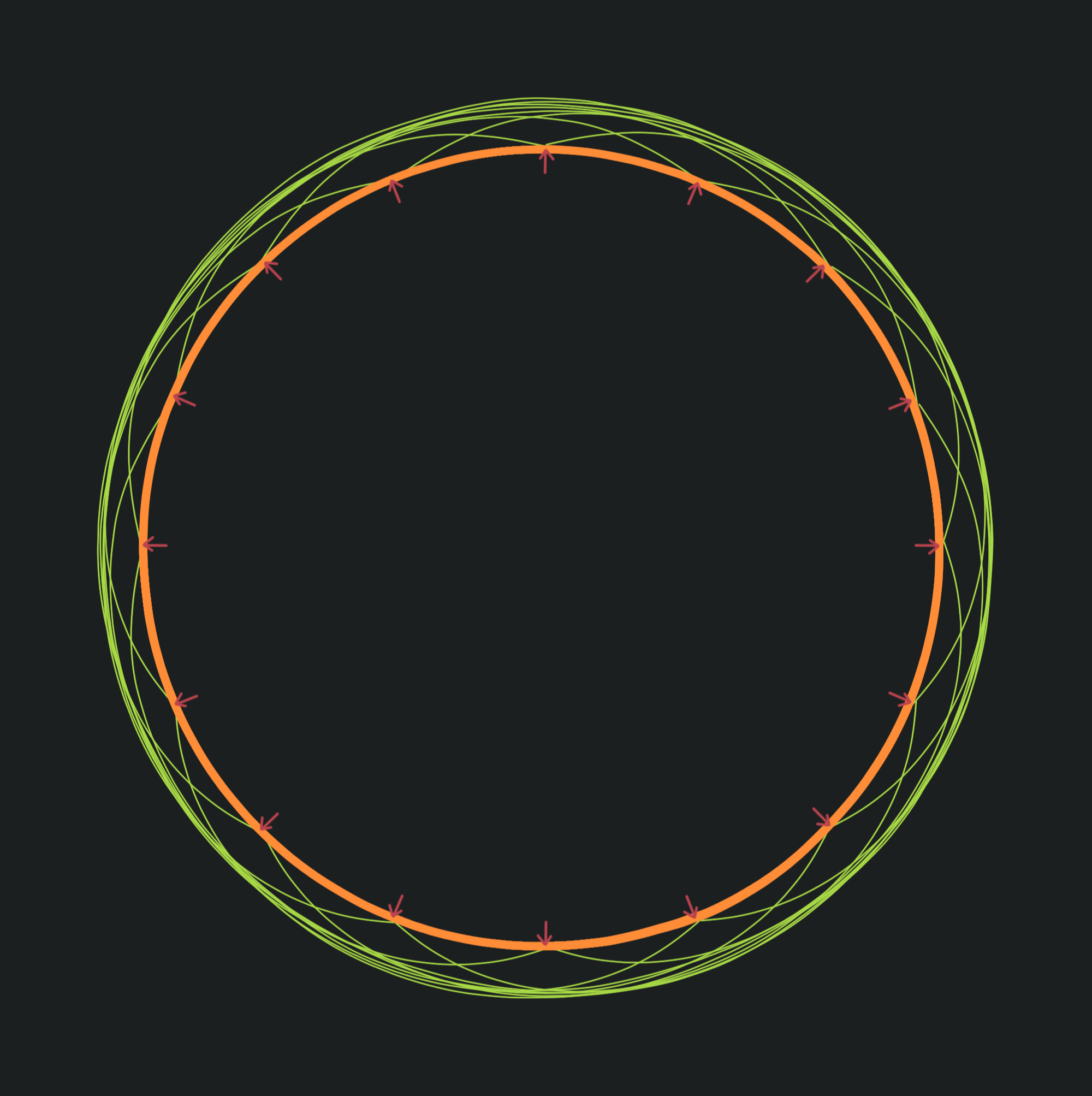
The Decoupled Orbital - Arbitrarily Large Rotating Habitats
It is often noted that rotating habitats have a size limit based on the structural material used, but this is not really the whole story. Rotating habitats can be bigger (much bigger) than commonly cited, and all it takes is a decoupling.

The Orbital Convention - Design and Documentation Conventions for Rotating Habitats
How will rotating habitats be designed, and what kind of design views can be employed? In this post I will contrast the qualities of terrestrial structures with rotating habitats through the lens of design documentation and construction documents. I will end by suggesting a convention for designing and documenting the design intent of these orbiting structures.

Designing for 3-Dimensional Space
Space is a hostile environment to life as we know it, but with the help of thoughtful design and imagination space can also play host to environments that can expand the mind and spirit. This post explores some of the unique challenges and opportunities faced in the pursuit of creating enriching spaces for humans free of gravity.

Simulating Gravity with Rotational Acceleration
The acceleration that gravity induces can be simulated (albeit crudely) by spinning up a rotating shell. On paper, this seems like a convenient 1-1 simulation, but there are several important differences between the two that can effect the experience of any individuals inhabiting them.
Comparison of Bulk Radiation Shielding Materials
Providing adequate radiation shielding for space habitats via bulk material is arguably the most difficult logistical challenge facing designers. In this post I address the question of what kinds of shielding may be appropriate for near-term space habitats.

Modularity, Flexibility, Interchangeability
On the cutting edge of technology and exploration, there are no certainties. All the planning and simulations cannot safeguard against uncertainty. Anomalies and unforeseen circumstances have the potential to throw a wrench into even the most well-planned mission. It is for this reason that the degree to which a habitat can adapt to the needs of the users and the mission becomes valuable unto itself. This adaptation takes many forms, but I’ll focus on those of modularity, flexibility, and interchangeability.
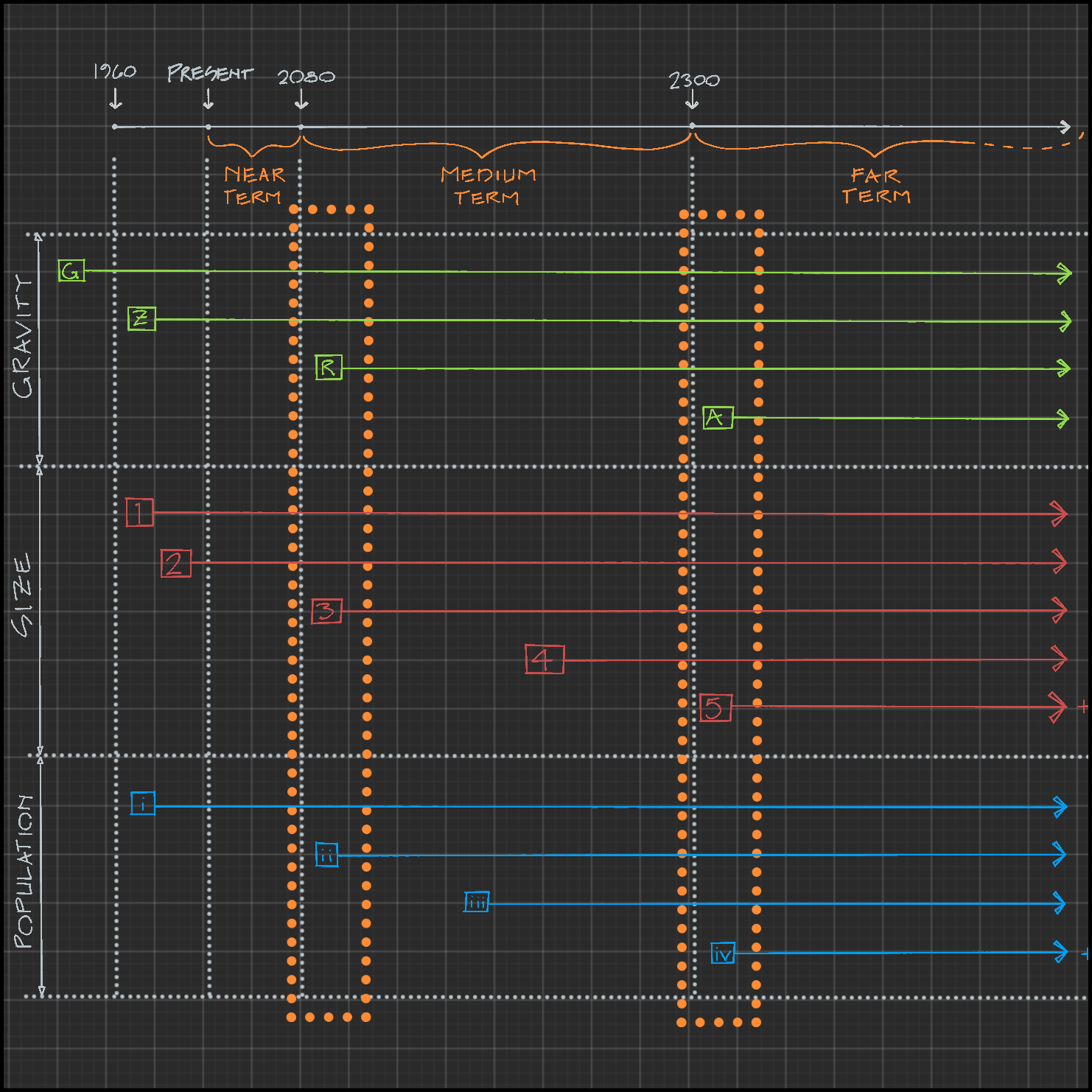
Codification & Future Time Periods
Whether it be the size, population, technology, or any other aspect, the combination of these factors determines in some way the future time period that the design’s construction may be plausible. I have applied these factors to a timeline showing where they might have a chance of appearing in our future. I have broken this timeline into three periods that I view as categorically different from one another. I have chosen to name these time periods the Near Term, the Medium Term, and the Far Term.

Welcome to Space
Designs, sketches, papers, and theory for space architecture, space habitats, space stations, and more.
